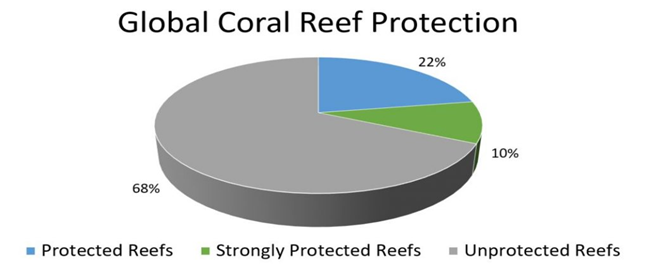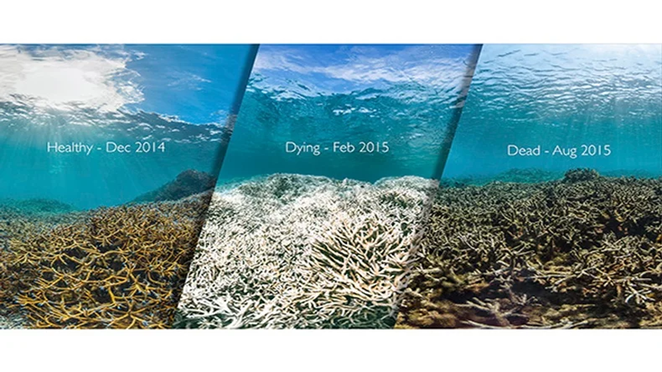The Worldwide Coral Bleaching Ecological Issue
ByHow does coral bleaching affect species?
The main ecological issue I will be focusing on in this blog is coral bleaching. Places where coral bleaching can be found include the Great Barrier Reef, Hawaii, Jarvis Island, Maldives, Indonesia, Thailand, United States and surprisingly Japan. (http://en.m.wikipedia.org/wiki/Coral_bleaching) The ecosystem that is most affected by coral bleaching is the reef ecosystem. (Hancock. http://www.worldwildlife.org/pages/everything-you-need-to-know-about-coral-bleaching-and-how-we-can-stop-it) Species that are affected by coral bleaching because their habitats and food source are the reef ecosystem include, fish, lobsters, clams, seahorses, sponges, sea turtles and even coral that live or other coral.

What is coral bleaching?
Now that we understand what I will be going over in this blog, let us get more in-depth about what coral bleaching is. Coral bleaching is when coral, that used to be very colourful and vibrant loses that colour and turns white. Usually when the coral is bleached white it means the coral is died, or slowly dying. But sometimes in exceedingly rare cases, the coral can recover from the coral bleaching if they can get a new food source or get back the food source it had before. (UW News staff. December 18,2020) Rising temperatures caused coral bleaching so if we cannot get it down or at least under control the damages could be irreversible.

How does coral bleaching affect people long term and short term
Coral bleaching can affect us, we never truly realize how much we rely on the coral reefs to support us, if it is protecting us, providing food or a way of life for us. Now you might be wondering how the coral reefs protect us well, let me explain. Instead of waves crashing full force they crash into the coral(seawall), and we only get the after wave, but without the coral the full force of the waves they will destroy homes, flood beaches, and sadly people may die more often (getting pulled under the aggressive waves etc.). Now how many Indigenous and non-Indigenous people make a living or survive off the fish that the coral is a home to, without that habitat the fish population will decrease, and with it the fish industries.

References
UW News staff
December 18,2020
Http://www.noaa.gov/education/resource-collections/marine-life/coral-reef-ecosystems
NOAA
February 1,2019
http://sanctuaries.noaa.gov/news/jun16/how-is-coral-bleaching-affecting-sanctuaries.html
Brayton
June 2016
WWF
First statistics photo
Georgian
May 24, 2018
https://www.scientificamerican.com/article/corals-may-get-temporary-reprieve-from-bleaching/
Patterson
E&E News
February 24, 2017
Third photo used
Le Page
February 22, 2017